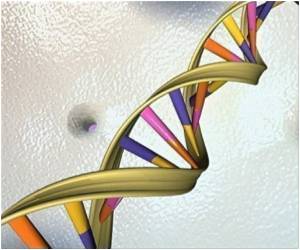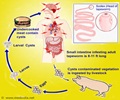An ancient gene family that plays a pivotal role in regulating the excitability of nerves within the brain has been identified by an American biologist.

"However, when this threshold is set too low, neurons can become hyperactive and fire in synchrony. As excessive firing spreads across the brain, the result is an epileptic seizure."
Managing this delicate rest-excitement balance are ion channels-neuronal "gates" that control the flow of electrical signals between cells. While sodium and calcium channels help to excite neurons, potassium channels help to suppress signaling between cells, increasing the threshold at which nerves fire.
However, the genetic mechanisms that control the potassium channels and set this threshold are not fully understood. Jegla's team focused on a particular potassium-channel gene - called Kv12.2 - that is active in resting nerve cells and is expressed in brain regions prone to seizure.
Jegla said: "We decided that Kv12.2 was a good candidate for study because it is part of an old gene family that has been conserved throughout animal evolution. This ancient gene family probably first appeared in the genomes of sea-dwelling creatures prior to the Cambrian era about 542-million years ago. It is still with us and doing something very important in present-day animals."
Previous studies have suggested that the Kv12.2 potassium channel has a role in spatial memory, but Jegla and his team focused on how it might be related to seizure disorders.
Advertisement
Jegla said: "In mice without a functioning Kv12.2 gene, nerve cells had abnormally low firing thresholds. Even small stimuli caused seizures.
Advertisement
Jegla hopes to open up new avenues of epilepsy research by studying whether activation of the Kv12.2 potassium channel in normal animals can block seizures.
He said: "Ion-channel defects have been identified in inherited seizure disorders, but many types of epilepsy don't have a genetic cause to begin with. They are often caused by environmental factors, such as a brain injury or a high fever. However, the most effective drugs used to treat epilepsy target ion channels. If we can learn more about how ion channels influence seizure thresholds, we should be able to develop better drugs with fewer side effects."
The study appears in Nature Neuroscience.
Source-ANI










